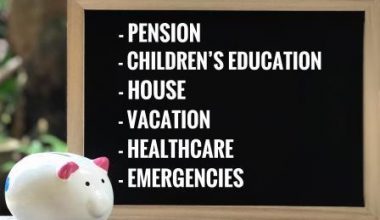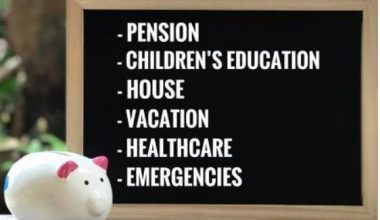A young couple wants to plan for their child’s education and marriage, buying a car and retirement planning. Gibin John, Geojit’s Investment Analyst, analyses their current investments, assets and liabilities and helps them plan to achieve their goals
I am Vivek and my wife is Anjali. We are working in the software domain. We have one daughter. I am 38 years old; my wife is 35 and daughter is 8 years old. Our monthly net income is ₹ 1.50 lakh and ₹1.25 lakh respectively. Currently, we have no structured investments. Our living expenses are around ₹ 75,000, daughter’s education fee is ₹ 30,000 per quarter and home loan (joint) EMI is ₹ 35,000 per month. Current loan outstanding amount is ₹ 29 lakh and end date is June 2032.
We have an insurance policy which we took in 2018 and the sum assured is ₹ 10 lakh and the yearly premium is ₹ 56,192 for 20 years. We are doing monthly SIP of ₹ 30,000 in equity mutual funds and its current value is ₹ 5 lakh. We also make monthly deposits of ₹5000 into a 1-year RD @ 5.2%. It will mature on 22.01.2023. We have a Bank fixed deposit of ₹ 11 lakh, and it will mature after 4 months. We have a flat worth ₹ 50 lakh and land with current value of ₹ 30 lakh. 100 sovereigns’ gold is in the form of ornaments, that can be used for our daughter’s marriage.
Our main goal is to save money for our daughter’s higher education. We are expecting the cost of higher education to be ₹ 20 lakh. For daughter’s marriage the expected cost is ₹ 35 lakh. We are planning to buy a new car after three years within a budget of ₹ 10- ₹ 15 lakh. We are planning to retire at my age of 50. We require a monthly passive income of ₹ 50,000 at that time to meet our expenses. Please advise on how we can achieve our dreams. Also suggest tax saving options which are suitable for us.
Gibin John, a certified financial planner replies:
It is commendable that even though you are professionally busy, you have dedicated some time to prepare a financial plan and invest money in an effective way. Currently you have invested money in different products, and you can utilize that money along with new investments.
Your current total income is ₹ 2,75,000. After deducting the total expense of ₹ 1,20,000 from the income you have an investable surplus of ₹ 1,55,000. If your entire investments including insurance premium are converted into monthly term the amount is ₹ 44,656.
Firstly, you have to set a side certain amount for meeting any contingency situations. For this purpose, you have to keep an amount worth minimum 6 months expense as emergency fund. In your case the amount is ₹ 8 lakh. For creating this amount, you may set aside the amount from your fixed deposit of ₹ 11 lakh. When the amount is utilized fully or partially, don’t forget to replenish the fund.
Your main goal is daughter’s higher education and her marriage. You are planning to spend ₹ 20 lakh for her education, and it will be after 9 years. If this cost is inflated at 8% then the cost will become ₹ 40 lakh at that time. For accumulating this amount, you have to invest ₹25,000 every month.
Another important goal is daughter’s marriage when she is 25 years old. You expect this cost to be ₹ 35 lakh but this cost will become ₹ 95 lakh if the cost increases at 6% per annum. You may allocate 50% of gold, that is 50 sovereigns towards this goal. If the gold value grows at 5% every year, then the value will become ₹ 41 lakh. For accumulating the balance amount, you have to invest ₹15,000 every month. You have 17 years to accumulate a corpus for your daughters marriage but you have only 12 years before retirement at 50 years. Therefore, you need to accumulate the amount for this goal in the next 12 years.
These goals are long term in nature so you can choose equity oriented mutual fund. The expected average return on this investment is 9%.
Post retirement period is more important part of life than the working period. There is no income during this period. So, everybody should set up an income plan for this period. You require a passive income of ₹ 50,000 during the post retirement period. But if you consider inflation this amount will become ₹ 1,00,000. You should create a corpus of ₹ 3.16 crore for getting inflation adjusted expense till you reach the age of 80. For creating this corpus, you shall invest ₹ 1,25,000, in equity oriented mutual fund.
You have not mentioned about interest rate of the home loan. However current loan interest rate is very less in our country. You both are in 30% income slab, and we assume that both of you are utilizing the loan repayment amount for income tax deduction also. You can claim deductions up to ₹ 1,50,000 under 80C section. This section allows deduction for investment made in PPF, EPF, LIC premium, Equity linked saving scheme, principal amount payment towards home loan, stamp duty and registration charges for purchase of property, Sukanya samriddhi yojana (SSY), National saving certificate (NSC), Senior citizen savings scheme (SCSS), ULIP, tax saving FD for 5 years, Infrastructure bonds etc. You can take additional deduction of ₹ 50,000 by investing in NPS. Home loan interest potion up to ₹ 2 lakh is eligible for tax deduction. You can also claim health insurance premium up to ₹ 25,000 under section 80D. These are the important sections available for tax deductions.
Both your existing insurance policies will not give sufficient insurance coverage for meeting the expenses. So, both of you can take a term insurance of minimum Rs.1 crore each. We assume that the home loan has been already insured. If this loan is not insured, then that amount also should be added to the coverage.
We have not utilized the entire existing investments. You can utilize these amounts for new goal which may come in future. Also, we have not considered your salary increment in this plan. You should invest the incremental part in your salary which will help you to accelerate your wealth creation as well as ensure financial freedom.





